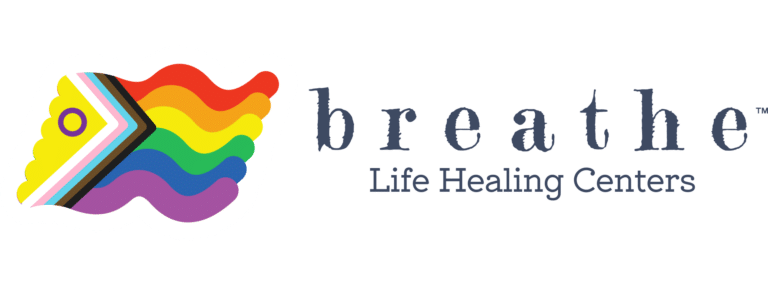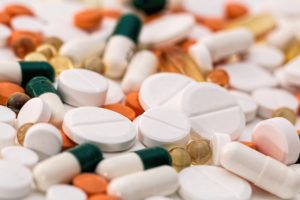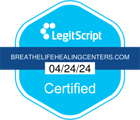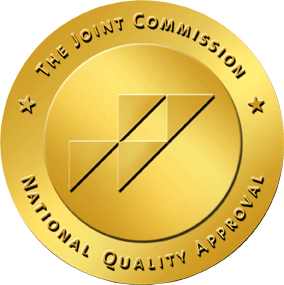Addiction is a complex mental illness and brain disorder characterized by compulsive drug use, despite harmful consequences. As the person continues to use drugs or alcohol, changes occur in the brain’s structure and function. These changes are responsible for intense cravings, personality changes, and other behaviors.
Brain imaging studies show that addiction causes noticeable changes in the parts of the brain responsible for memory, judgment, learning, decision-making, and behavioral control. These changes can last a long time. While each person is unique, researchers believe it takes at least one year for dopamine levels and brain cells to recover.
When going through the addiction and recovery process, it’s important to have as much information as possible. This way, individuals and families can make informed decisions. In this paper, we will discuss the trajectory of addiction to recovery, including how substance use affects the brain, the various levels of treatment, and the importance of aftercare.
Addiction and the Brain
The best way to understand addiction and its effects on the brain is to envision the brain as a computer made up of circuits and networks of neurons. Neurons send messages by releasing neurotransmitters in the brain, which then carry messages to other parts of the network.
Endorphins and dopamine are two types of neurotransmitters responsible for pleasure and euphoria. When these sensations are triggered, the brain reinforces this behavior because it feels good. However, drugs and alcohol can hijack this system, just as a hacker would do to a computer.
For instance, drugs like heroin or marijuana activate neurons because their chemical structure mimics a natural neurotransmitter. In other words, these substances disguise themselves as true neurotransmitters and attach to neurons, causing abnormal messages to be sent through the network.
Stimulant drugs, such as cocaine or amphetamine, work a bit differently. They cause the neurons to release abnormally large amounts of natural neurotransmitters. This also disrupts the normal communication between neurons. While different types of drugs can affect the brain differently, repeated drug or alcohol use has long-term effects on the brain.
Hitting Rock Bottom
‘Rock bottom’ is a common phrase used to describe when a person hits their lowest point. When this point is reached, the addict has no choice but to give in and seek treatment. However, there are many misconceptions regarding ‘hitting rock bottom’ that can end up doing more harm than good.
First, it’s important to know that rock bottom is not a prerequisite for getting sober. The longer a person waits to seek treatment, the more damage is done. A person can want and need treatment much sooner than this. And the earlier a person receives help, the easier it is to treat the addiction.
Second, rock bottom does not look the same for everyone. For one person, it may be the loss of their marriage. For others, it can be losing a job and resorting to stealing and lying. Most people agree that when they hit their own personal rock bottom, it’s the point where they feel so incredibly uncomfortable that they must change.
Ultimately, many addicts do wait until they reach their lowest point to reach out for help. Often this happens because the consequences of their addiction have finally caught up to them. They may have no job, no money, and nowhere to live. When they have to face this reality, the only option is treatment.
Staging an Intervention
An intervention is an important event created by the friends and family of the person struggling with addiction. The purpose of the event is to help the person realize that they have a problem and need help.
Interventions have been popularized in reality television shows, but they are much different in real life. These events must be carefully planned alongside a professional interventionist, and they come in more forms than the classic surprise meetings that are shown on television.
The different types of interventions include:
- The classic intervention occurs when a group of individuals, typically close family and friends, confront the person struggling with substance abuse in a non-confrontational manner. The goal is to help the person recognize their problem and seek help.
- The simple intervention happens when one individual, usually a friend or family member, confronts the person with addiction in a neutral environment. This one-on-one intervention is most successful when carried out with a professional interventionist.
- A family system intervention is designed for the members of the family unit who are contributing to the addiction. This could be a parent who is enabling their child or a spouse who is also engaging in substance use.
- Crisis intervention occurs on the spot, usually when the person’s substance abuse has put them in a potentially dangerous situation. There is no time to wait – the person is confronted immediately.
Are interventions effective? Yes, they often are. But there are certain ingredients an intervention needs to be successful. The first element is the right intervention team. It’s recommended to keep the team small, usually under ten people. Also, the only people to include are those close to the addict.
Also, family and friends must work with a professional interventionist. This individual will help the group prepare accordingly and guide the meeting in a positive direction. It’s also best to have a treatment center picked out so that if the person does agree to treatment, they can start immediately.
Entering Detox and Treatment
Recovery begins with detoxification (detox), the process of clearing the body of drugs, alcohol, and other toxins. Everyone has a different experience with detox. The symptoms and side effects depend on many factors, such as the patient’s physical health, the types of drugs they were using, how much and how often they were using the substances, and other factors.
Most medical professionals discourage detoxing at home. Not only can it be fatal, but also it’s highly uncomfortable for the individual. Many people who try to detox at home end up relapsing because the withdrawal symptoms are too intense.
A medically supervised detox program provides a safe and secure place for a person to detox from drugs or alcohol. Various medications and therapies are used to keep the patient comfortable. Often, they are tapered off drugs or alcohol rather than having to stop cold turkey. This raises the chances for a successful detox.
Furthermore, a medical detox center has around-the-clock support. If symptoms pop up in the middle of the night, or the patient is having complications with nausea, vomiting, or breathing, they can access immediate medical care. While the detox timeline does vary, most people complete this process in three to ten days.
Once the detox process is over, therapy can begin. This may be done at the same treatment center or a different one. What’s important is that this portion of treatment begins right away. Detox simply rids the body of drugs or alcohol, but there is still a psychological compulsion that must be addressed.
Assessments and Evaluations
To ensure the patient receives the most personalized care, several assessments and evaluations are provided by the treatment center. These assessments allow treatment teams to create tailored clinical approaches for each individual.
Medical assessments may be given to monitor the patient’s health while also promoting wellness and holistic care. Clinical assessments help clinicians understand the person’s needs, strengths, abilities, and the areas they want to focus on.
It’s also important that psychiatric evaluations are done to establish the patient’s mental health status. Substance use disorders are closely linked to mental health disorders. They go hand-in-hand because people with untreated mental illness may self-medicate to numb their pain. Over time, drugs or alcohol cause changes in the brain that exacerbate the symptoms of mental illness.
By conducting the appropriate assessments and evaluations, treatment centers can put together a custom treatment plan that addresses the patient’s needs and tracks their progress within the program. This plan is not set in stone. It may be adjusted at any time to reflect the patient’s changing needs.
Levels of Care
Recovery is a long-term, ongoing process that requires a lifetime of participation. Just as a person with diabetes must always make smart choices when it comes to diet and exercise, a person with a substance use disorder must be mindful of their triggers and how to cope healthily with stress.
With this in mind, it’s helpful to think of the recovery process as a continuum. Typically, a person in recovery will start with the highest level of care and then ‘step down’ to lower levels. However, where a person starts and how quickly they move through the continuum depends on their assessments and evaluations.
Let’s look closer at the five levels of care, as developed by the American Society of Addiction Medicine (ASAM).
1. Level 0.5 – Early Intervention Services
At this level, treatment is directed toward the risk factors that can cause a person to develop a substance use disorder. These services are designed for individuals who are at risk for addiction, such as those with aggressive childhood behavior, a lack of parental supervision, or a history of abuse or neglect.
2. Level 1 – Outpatient Services
As the first ‘full’ level of treatment, outpatient services allow people with substance use disorders to maintain some of their normal schedules while receiving professional treatment. After the assessment, individuals usually receive medications, therapy, and other treatments. This is the lowest level of care that generally requires nine hours of participation a week.
3. Level 2 – Intensive Outpatient/Partial Hospitalization Services
Individuals with more complex needs may start with an Intensive Outpatient Program (IOP) or Partial Hospitalization Program (PHP). These programs are more structured and offer more resources than an outpatient program.
- 2.1 Intensive outpatient services typically require nine to 20 hours of treatment each week. Individuals have regular contact with physicians, therapists, and psychiatrists. Patients in this program may also work part-time, go to school, or carry out other responsibilities.
- 2.2 Partial hospitalization programs are the most rigorous of outpatient programs. Individuals in this program usually attend treatment 20+ hours each week. During this time, they participate in individual, group, and family therapy, as well as have access to alternative treatments like yoga or acupuncture.
4. Level 3 – Residential/Inpatient Services
Residential treatment programs, or inpatient treatment programs, require individuals to live on-site or close to the treatment center. Treatment is offered 24 hours a day, 7 days a week, and includes outpatient substance abuse services, a structured environment, house meetings, alternative therapies, and more.
Inpatient programs are ideal for those who have severe addictions or co-occurring disorders. They provide regular monitoring and observation, as well as a structured environment that is free from most triggers and distractions. This allows patients to focus solely on their recovery.
5. Level 4 – Medically Managed Intensive Inpatient Services
This is the highest level of treatment and it involves 24-hour care and high-level medical and clinical monitoring. Both medical detox and medication-assisted treatment are included in this level of care.
Intensive inpatient services provide similar care as to what a person would receive in a psychiatric hospital. Patients are seen daily by a physician and treated for co-occurring conditions. This level of care is recommended for individuals who require medical stabilization.
Behavioral Therapies
Behavioral therapies are a core part of inpatient and outpatient treatment. Behavioral approaches help engage people in treatment, provide incentives for staying sober, modify attitudes and behaviors related to substance abuse, and increase life skills to handle stressful situations.
In other words, behavioral therapies are the ‘meat and potatoes’ of the recovery process. This is where the hard work is done. While this is not a complete list, these are some of the most widely used behavioral therapies.
- Cognitive-Behavioral Therapy (CBT) helps individuals learn to identify and correct problematic behaviors like inaccurate or negative thinking.
- Dialectical Behavior Therapy (DBT) is a type of modified CBT that teaches people how to live in the moment, develop healthy ways to cope with stress, regulate emotions, and improve relationships.
- Contingency Management uses reinforcement and rewards to help a person stay sober. It also promotes healthy living, positive goals, and positive lifestyle changes.
- Motivational Enhancement Therapy (MET) helps individuals resolve their ambivalence toward stopping drug or alcohol use and engaging in treatment.
- Motivational Interviewing (MI) helps people find their own desire to get sober rather than threatening them with consequences.
- Eye Movement Desensitization and Reprocessing (EMDR) helps people process traumatic experiences and emotions. It’s often used to treat post-traumatic stress disorder (PTSD).
- Rational Emotive Behavior Therapy (REBT) is similar to cognitive-behavioral therapy. It helps individuals identify negative thought patterns and beliefs that contribute to harmful behaviors.
Family Support
The family plays a vital role in the addiction recovery process. This is why it’s a main component of most treatment programs. Family involvement in substance abuse treatment increases the chances for successful treatment, prevents relapse, and improves psychiatric symptoms.
Not only is family involvement important for the person in recovery but also for the family unit as a whole. Often in families with addiction, certain behaviors must be addressed, such as enabling and codependency. Once these behaviors are recognized and understood, it’s easier for them to stop. This is how cycles are broken.
Additionally, family therapy gives everyone in the family unit a chance to heal. It’s not uncommon for family members to develop their own unhealthy coping mechanisms as a result of substance abuse, such as ignoring the problem, trying to control the person’s actions, or enabling the person. As the family unit heals, it strengthens ties and grows closer together.
Aftercare Services
Aftercare refers to the ongoing care a person receives after leaving a rehabilitation program. The most common forms of aftercare include 12-step meetings, outpatient care, counseling, and sober living.
Just as treatment plans are tailored to the individual’s needs, so are aftercare plans. They address some of the unique challenges the person may face as they transition to sober living. Most aftercare programs recommend that the person stays actively engaged in their aftercare plan for at least one year.
Why?
The risk for relapse is highest when a person first leaves rehab. Between 40 percent and 60 percent of people recovering from addiction will experience a relapse at some point in time. This is comparable to other chronic conditions such as type 1 diabetes, asthma, or hypertension.
Following an aftercare plan reduces the risk of relapse and keeps individuals on pace with their recovery goals. If relapse does occur, it’s important to know that this does not mean treatment has failed. Rather, relapse means that treatment must be modified, resumed, or changed to better meet the needs of the patient.
Overcoming Barriers to Recovery
Throughout the addiction recovery process, there are several barriers people may face. It’s important to be aware of these barriers because there are practical, effective ways to overcome them.
Not seeking appropriate care.
One of the main barriers to recovery is not getting help at all. The Substance Abuse and Mental Health Services Administration (SAMHSA) reports that 90 percent of people who need substance abuse treatment don’t receive it. There are many reasons for this, though the most common is because the person abusing substances is in denial.
To cross this barrier, the family and friends of the individual must recognize the problem and stage an intervention. People who are in an active addiction usually don’t know the severity of their problem and what’s at stake. However, the decision to change must come from within the person.
Cost of treatment services.
Medical care on the whole is not cheap. Addiction treatment services are no different. As a result, some people shy away from quality care because they feel they can’t afford it.
Fortunately, treatment is becoming more affordable and attainable for the average American. Under the Affordable Care Act, all insurance sold on Health Insurance Exchanges or provided by Medicaid must offer services for substance use disorders.
To manage addiction treatment costs, individuals should find a treatment center that is in-network with their insurance company. Outpatient treatment services are typically the cheapest, with costs increasing with each level of care.
It’s also important to point out that continuing an addiction is not free. Aside from the cost of drugs or alcohol, long-term addiction often results in lost income, financial problems, and legal troubles.
Not being able to work or go to school.
Another barrier to address is not being able to work or attend school when in rehab. Some families can’t miss a paycheck. In these instances, outpatient treatment is the solution. Outpatient services are more flexible and typically only take up a few hours of the day. Therapy can usually be scheduled in the mornings or evenings so that people can continue their day-to-day responsibilities.
Furthermore, there are protections in place for people who seek rehabilitation services. For example, an employer may not discriminate against a person who has a history of addiction or is seeking treatment for a substance use disorder. As long as the person is getting help for their problem and not showing up to work intoxicated, they cannot be discriminated against.
Stigma of addiction.
Despite a greater understanding of addiction as a brain disorder, it still carries a stigma. Some people assume that addicts are unemployed people living on the streets, but this simply isn’t true. 10.8 million full-time workers have a substance use disorder. In other words, most people with substance use disorders are employed – not unemployed.
The best way to fight this stigma is by providing education and resources to communities. While the stigmas surrounding addiction probably won’t ever be eradicated, there are ways to lessen them so that more people are open and willing to admit their problems and receive help.
Summary
Addiction is a complex condition that affects a person’s ability to function in everyday life. Due to changes in the brain as a result of drug or alcohol use, the person will continue to use substances even when they know they’re causing problems.
As debilitating as addiction is, it is treatable. The treatment process often starts with an intervention, as most people who are abusing substances have trouble recognizing the problem on their own. Even if they do, encouragement from friends and family is invaluable.
Once in a treatment center, the person is thoroughly evaluated and given the appropriate level of care. While each person’s needs are unique, the treatment continuum typically includes detoxification, therapy, and aftercare.
With healthy lifestyle choices and behavioral changes, the brain can repair its natural and original wiring and its chemical balance. Most importantly, a person who once struggled with drug or alcohol use can go on to live a full and meaningful life once again.
For more information on our admissions process or to get help for addiction treatment, contact Breathe Life Healing Centers today.













